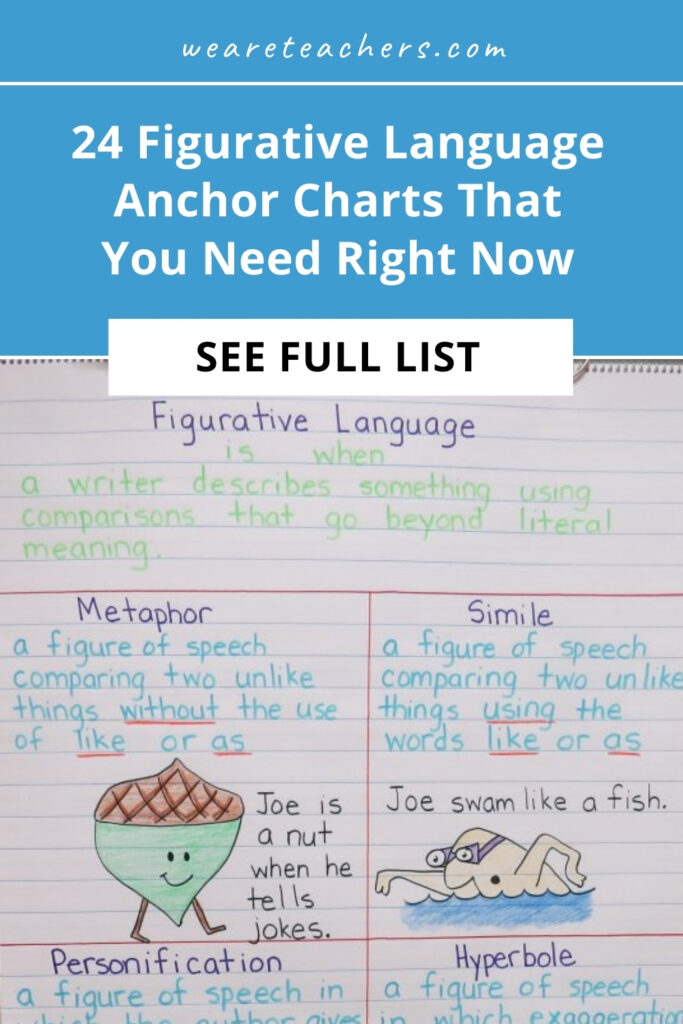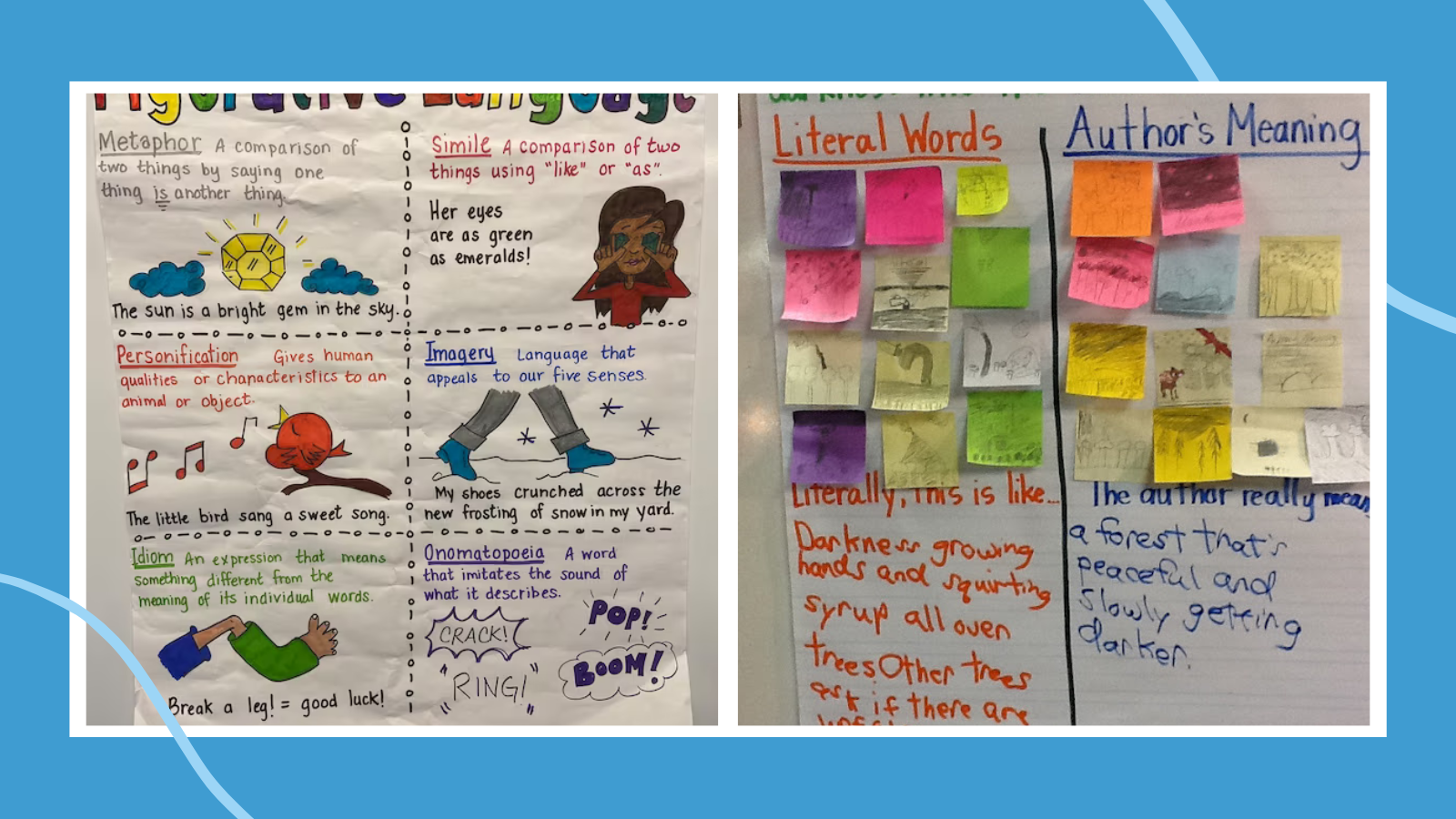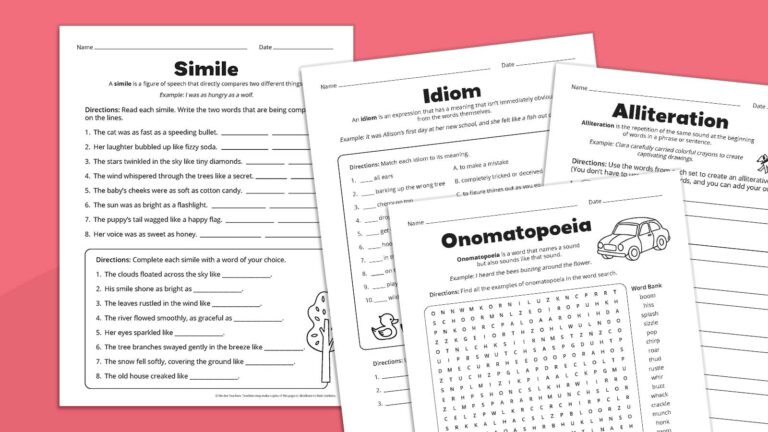Figurative language is important for reading comprehension, and it’s fun to teach. Once students understand the difference between literal and figurative language and how authors use figurative language, it adds depth and a lot of humor to reading. These figurative language anchor charts provide the support you need to help kids with metaphors, similes, and so much more. Make a few to hang in your classroom quicker than a cheetah on the hunt!
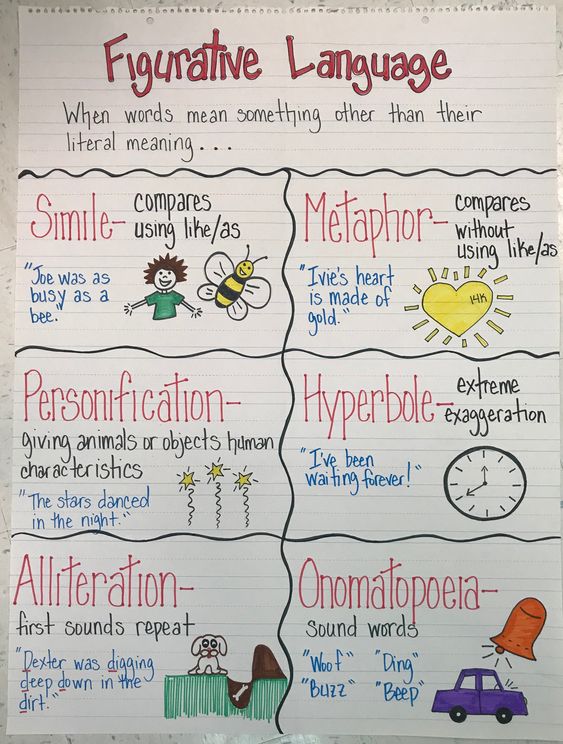
1. Figurative Language 101
This chart includes definitions and examples of some of the major types of figurative language. The pictures are terrific memory aids.
Learn more: Basic anchor chart
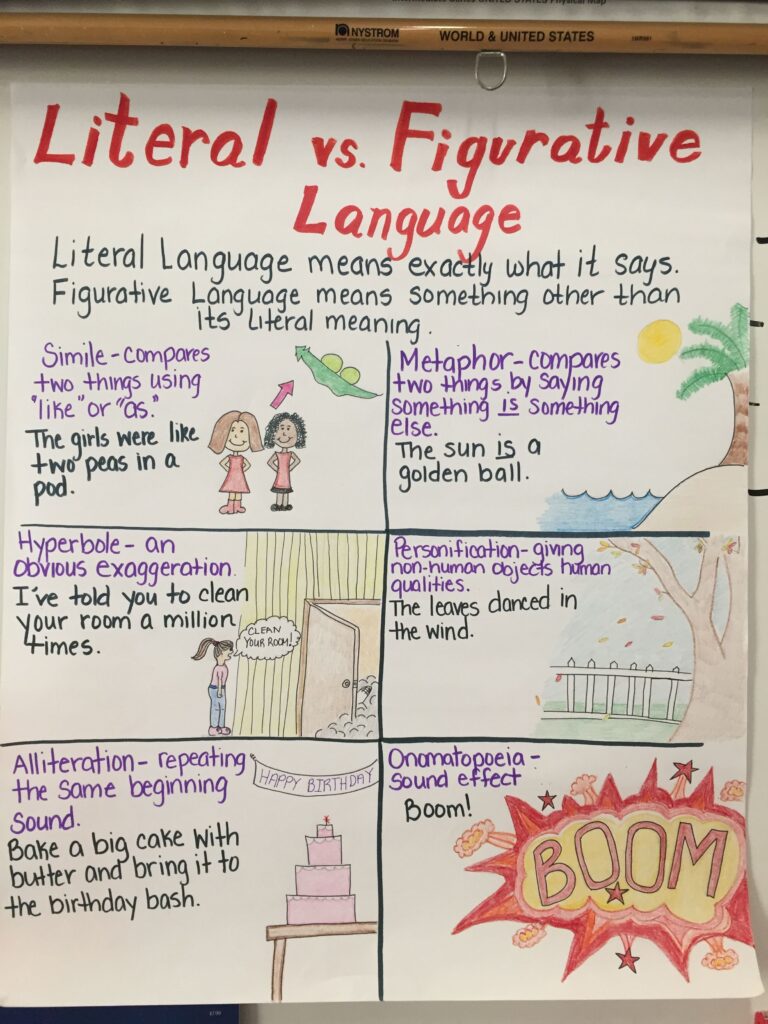
2. Literal vs. Figurative Language
Does it drive you nuts when kids use “literally” the wrong way? This chart might help! (Then again, it might not, but at least they’ll know the difference.)
Learn more: Literal vs. Figurative Language anchor chart
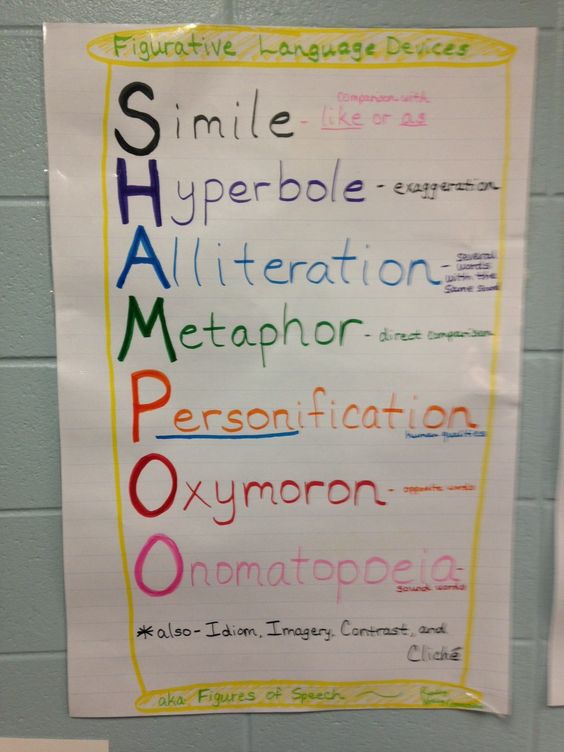
3. SHAMPOO
Acronyms to the rescue! This simple chart gives students an easy way to remember seven of the most common types of figurative language.
Learn more: SHAMPOO anchor chart
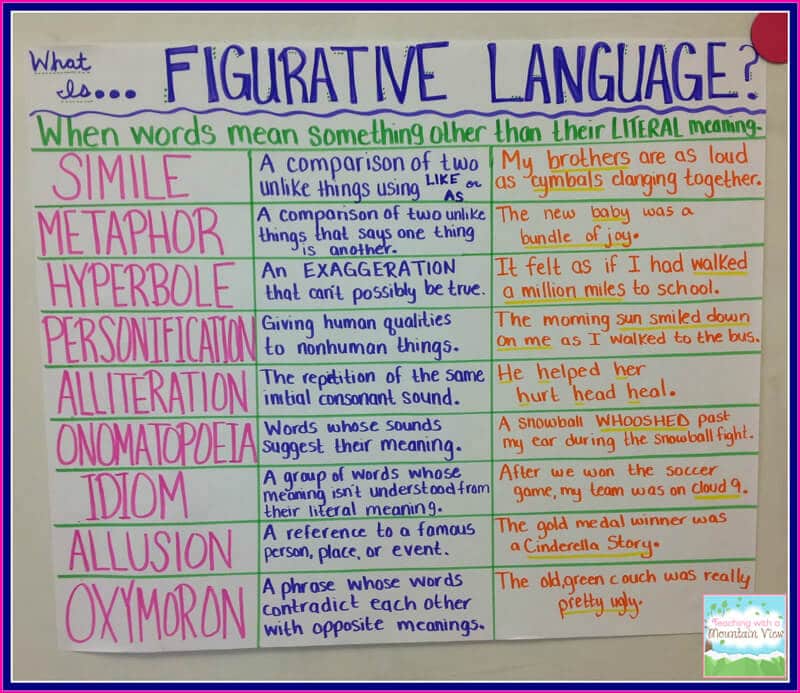
4. Definitions and examples
This comprehensive chart serves as an excellent reference for students working on tricky terms. The examples are particularly helpful.
Learn more: Table-format anchor chart
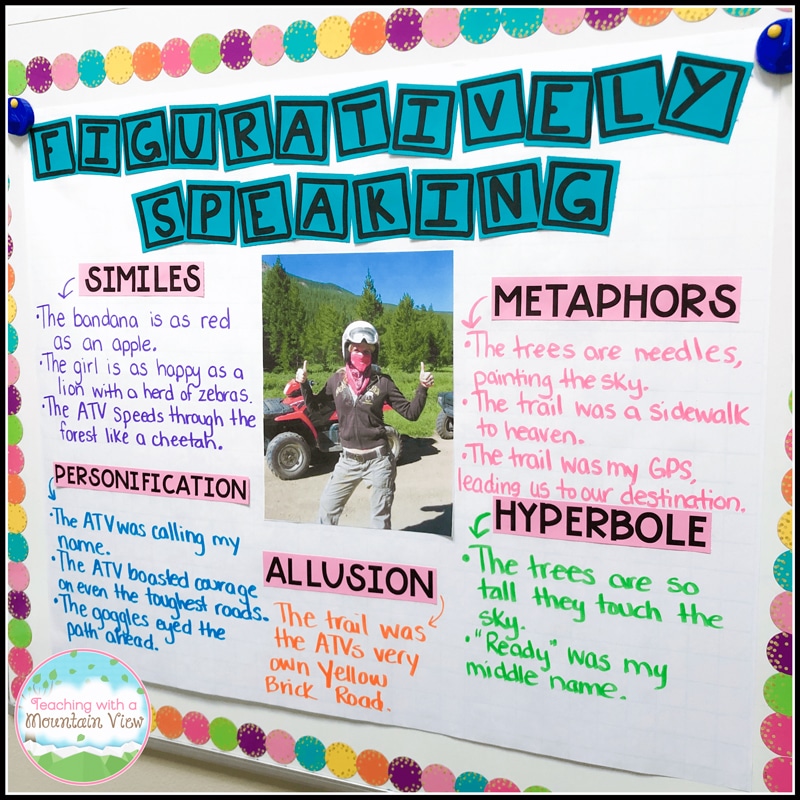
5. Figuratively Speaking
Highlight some of the most-used figurative language and provide multiple examples. Be sure to have students help you come up with the best ones to list.
Learn more: Figuratively Speaking anchor chart
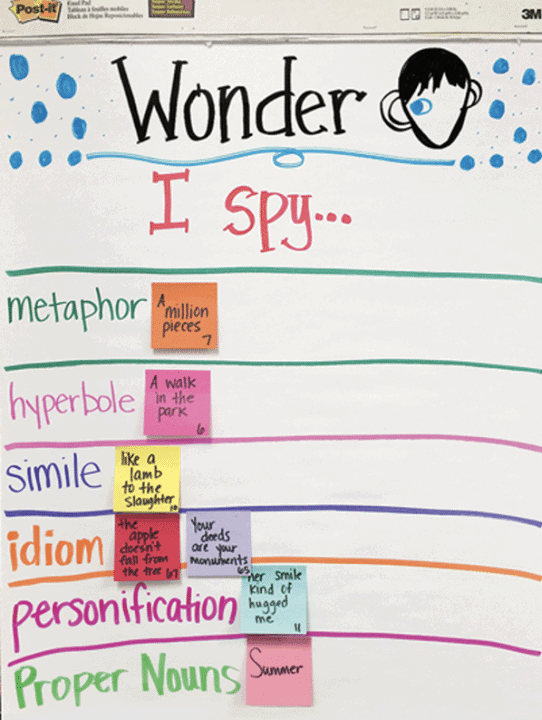
6. Build your own anchor chart
Make a blank chart you can use with any text. Students add examples using sticky notes as they read.
Learn more: Anchor chart with student examples
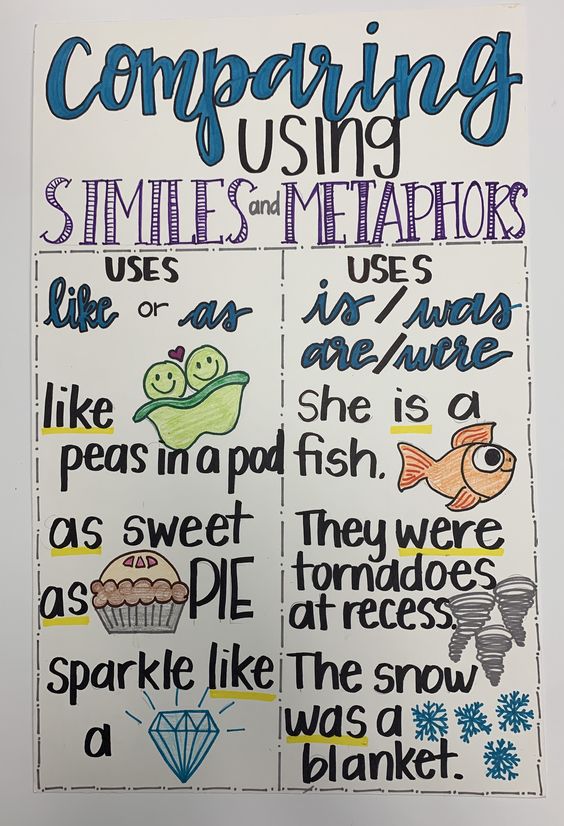
7. Compare similes and metaphors
Similes and metaphors are similar, but the difference is in the key words “as” or “like.” This chart makes that as clear as crystal.
Learn more: Anchor chart comparing metaphors and similes
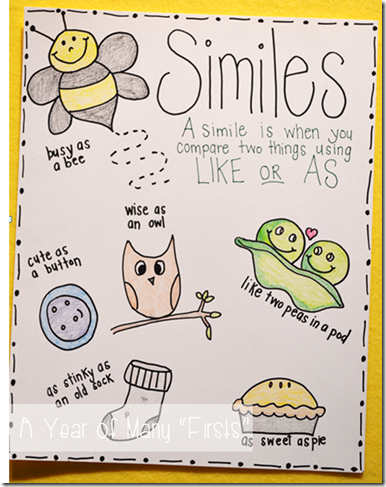
8. Simile examples
It can be a little difficult for kids to tell similes apart from metaphors. This cute-as-a-button chart gives lots of examples.
Learn more: Similes anchor chart
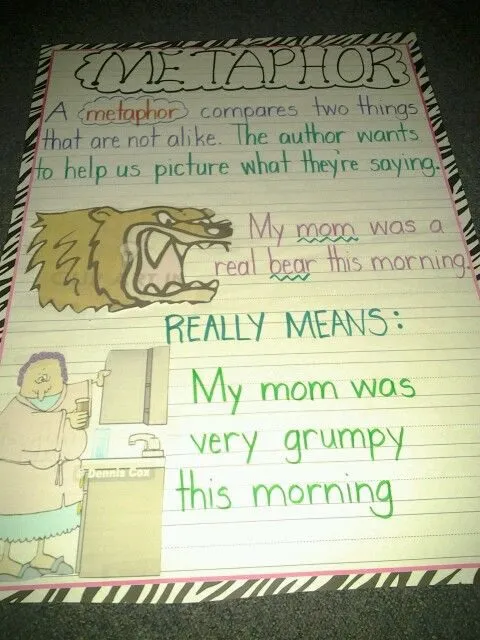
9. Make metaphors clear
This chart provides a great (and fun) example of a metaphor. Challenge students to create their own metaphors using this one for inspiration.
Learn more: Metaphor anchor chart
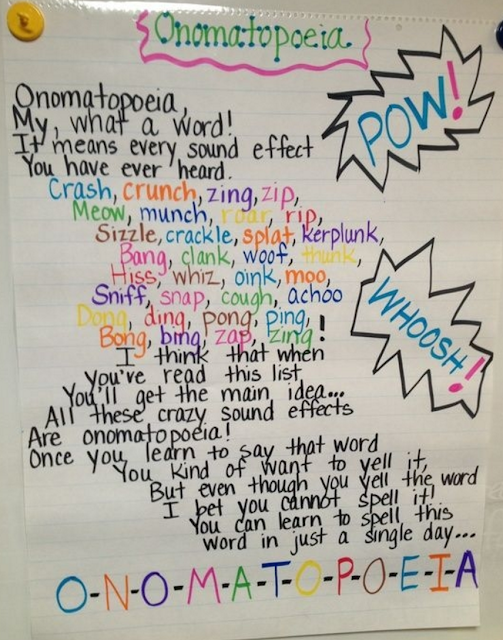
10. Onomatopoeia poem
OK, maybe they won’t all be able to spell it, but they’ll definitely remember what it means! Onomatopoeia is everyone’s favorite type of figurative language.
Learn more: Onomatopoeia poem anchor chart
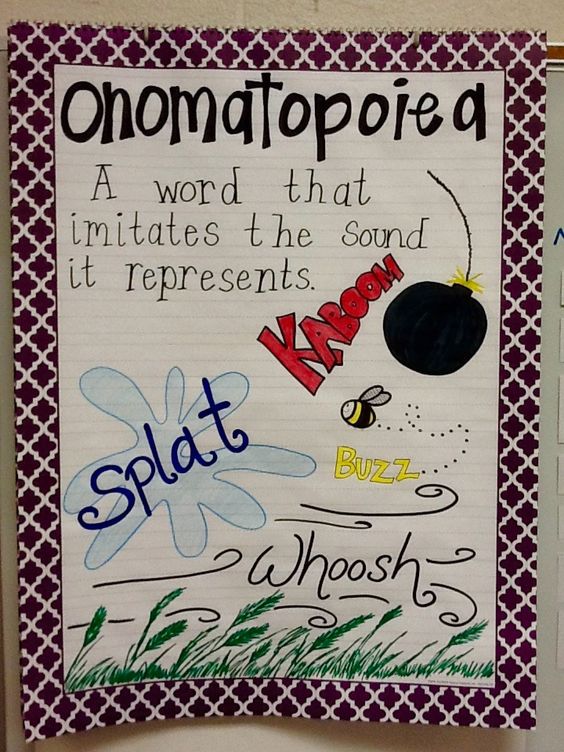
11. Onomatopoeia examples
Pow! These illustrated examples make the meaning of this figurative language term easy and clear.
Learn more: Onomatopoeia example anchor chart
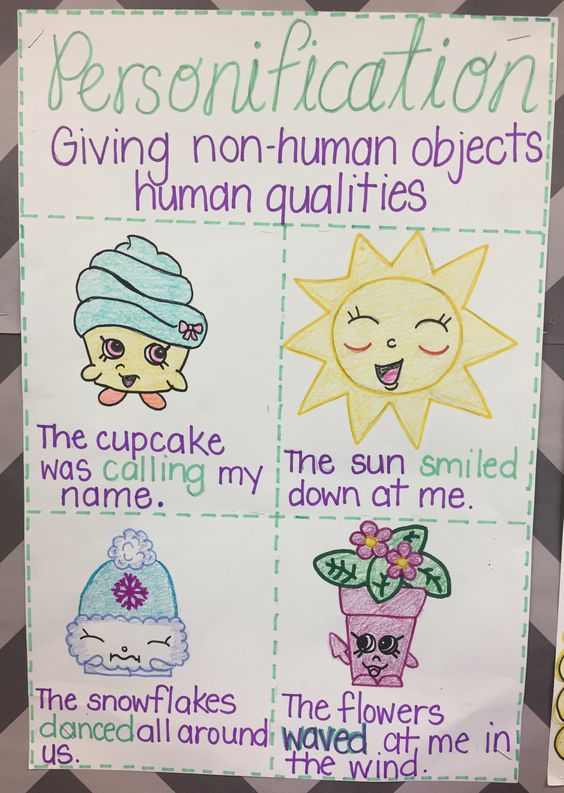
12. Make it cute
The sweet illustrations on this chart really make it come alive. Can’t draw? Print some free clip art images instead.
Learn more: Personification anchor chart
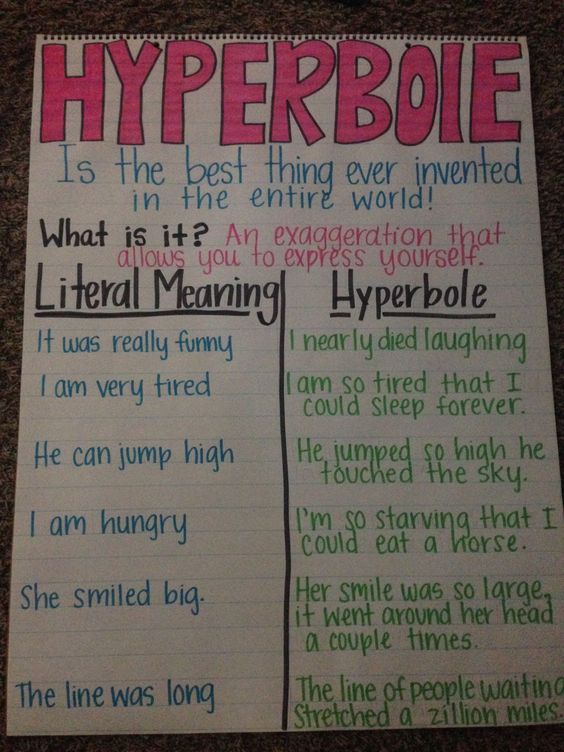
13. Hyperbole is the best!
This is one kind of figurative language that definitely comes naturally to kids, even if they don’t know its name. They’ll love coming up with the best examples in the world!
Learn more: Hyperbole anchor chart
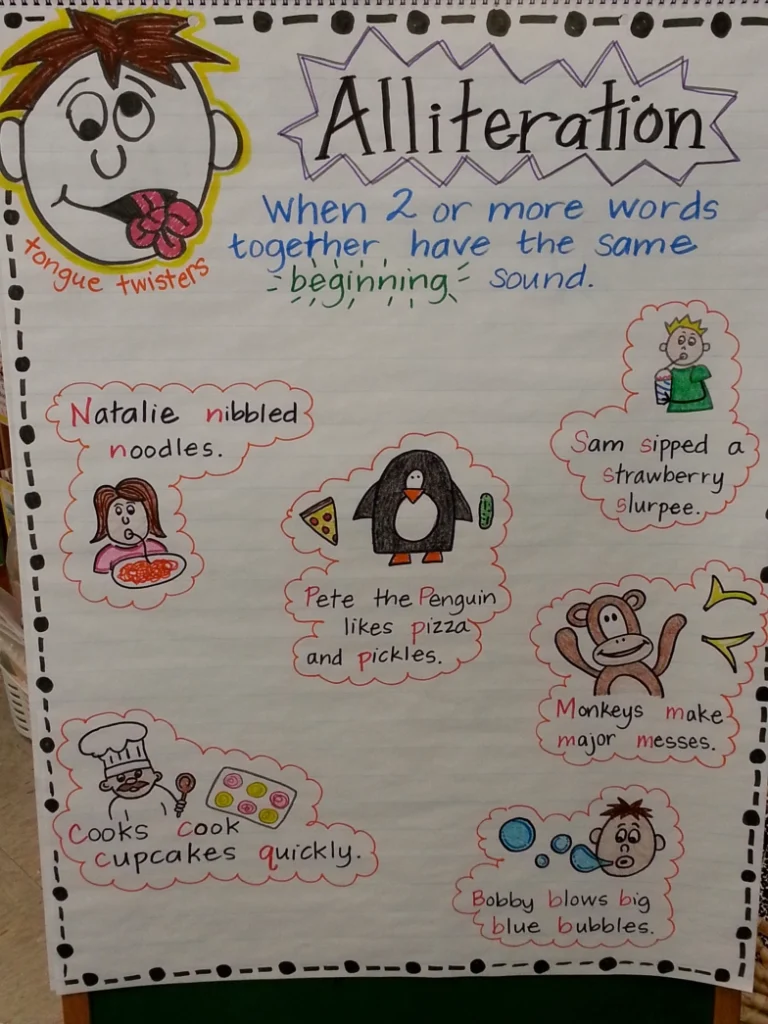
14. Alliteration tongue twisters
Looking for an amazingly awesome alliteration anchor chart? Here it is! These hilarious tongue twisters will be a big hit with kids.
Learn more: Alliteration anchor chart
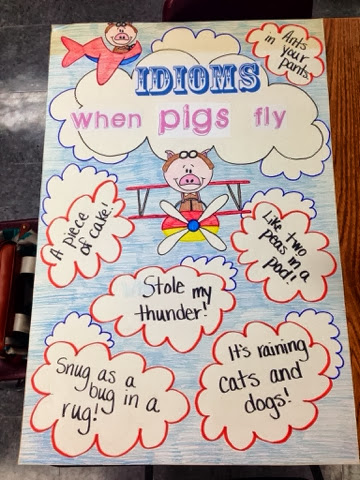
15. Explain idioms
Idioms become natural to us over time, but young students have to learn them. Use this chart, plus check out these idioms every kid should know.
Learn more: When Pigs Fly anchor chart
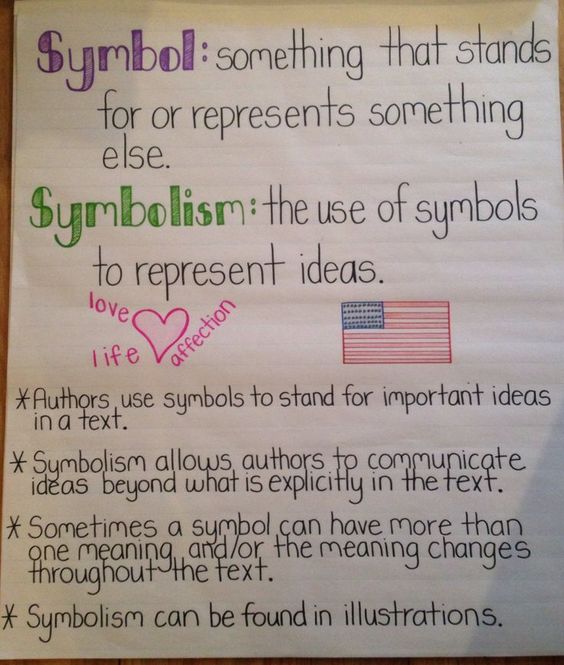
16. Symbols and symbolism
Being able to identify symbolism is an extremely important skill for students to develop as they grow older. Introduce the concept with this anchor chart.
Learn more: Symbolism anchor chart
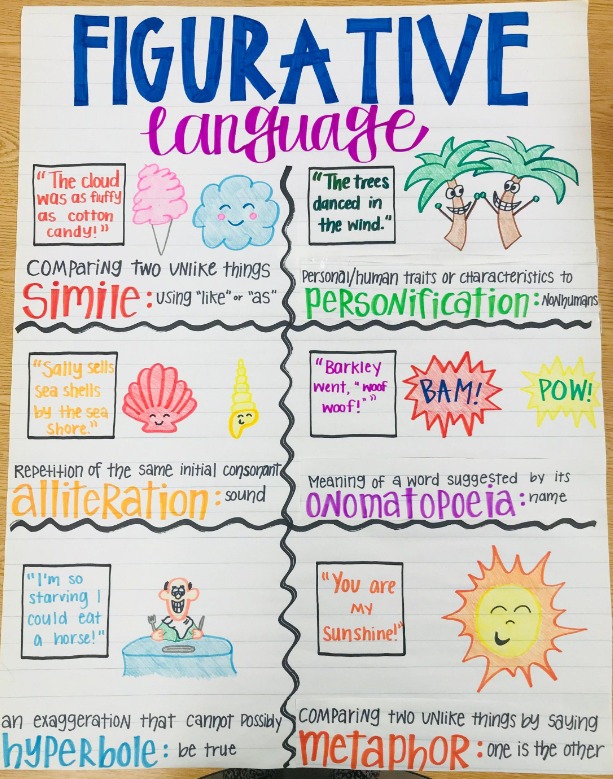
17. Use humor
Once students have mastered all the elements, create a cute anchor chart that aligns with your grade level’s humor.
Buy it: Figurative language anchor chart
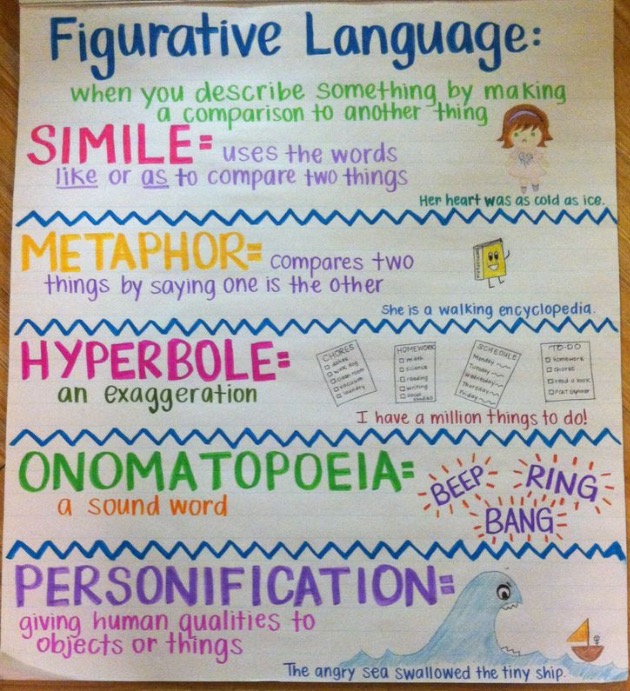
18. Keep it clear and crisp
Use a clean, crisp anchor chart to reinforce the definitions of different figurative language options.
Learn more: Figurative language anchor chart
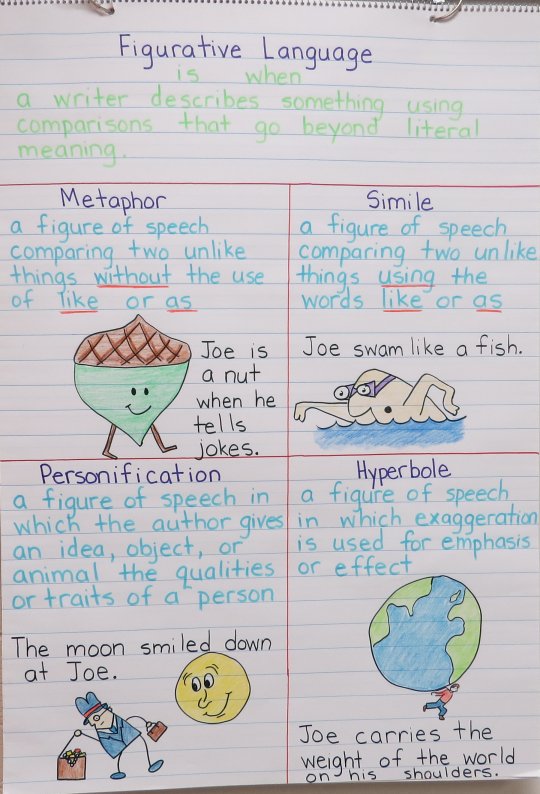
19. Create clear examples
Incorporate different colors to help organize the text so students can quickly get what they need from the anchor chart, a definition or example.
Learn more: Figurative language flip chart
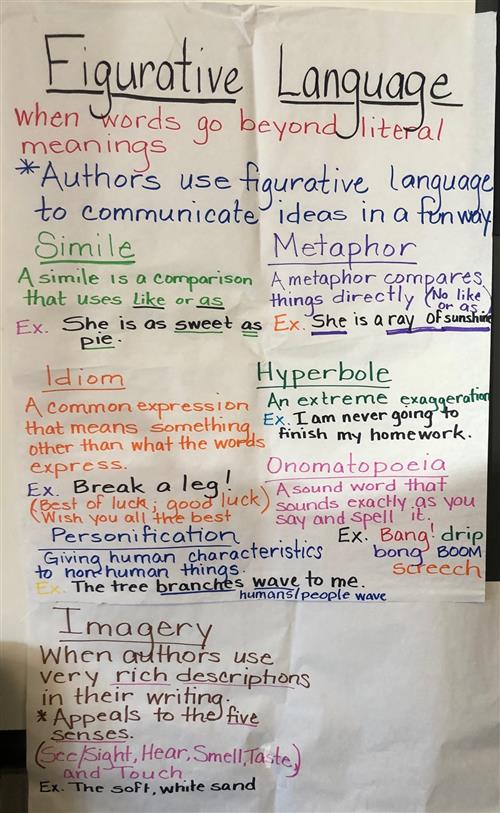
20. Don’t forget older students
Older students can handle more complex examples of figurative language and more information about why authors use figurative language.
Learn more: Complex figurative language anchor chart
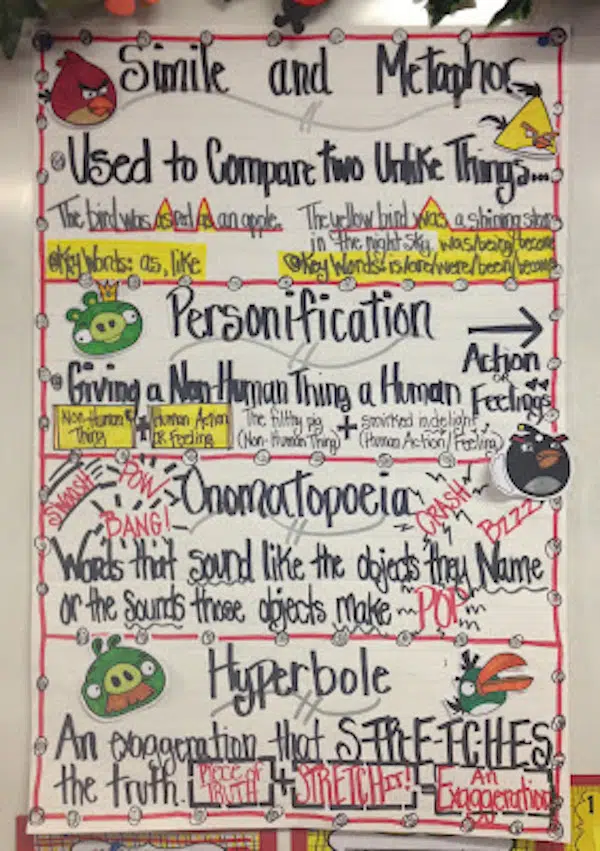
21. Bring in pop culture
If you’re looking for figurative language anchor charts that are silly and creative, try using examples from pop culture. This anchor chart features Angry Birds to help students remember each figurative language skill.
Learn more: Pop culture anchor chart
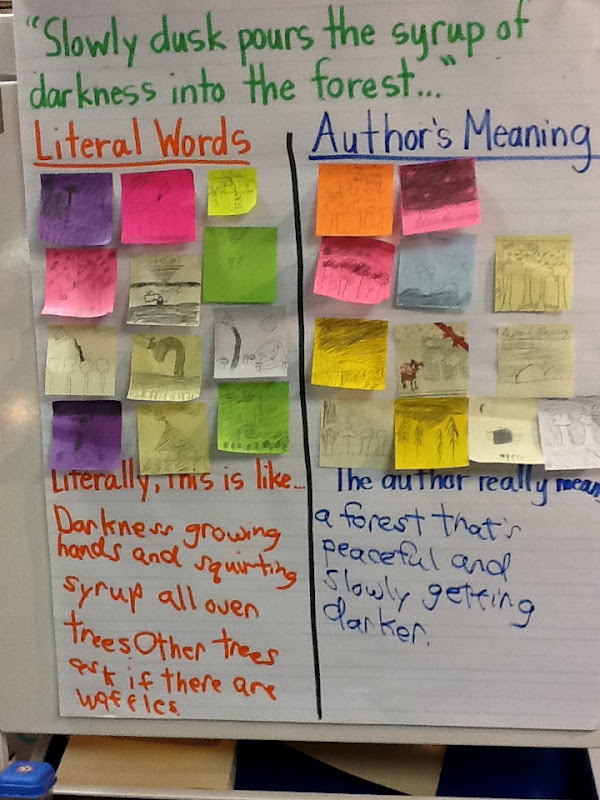
22. Engage with examples
Engage students in creating your own anchor chart, like this one where students added figurative language and what it literally means.
Learn more: Anchor chart with sticky notes
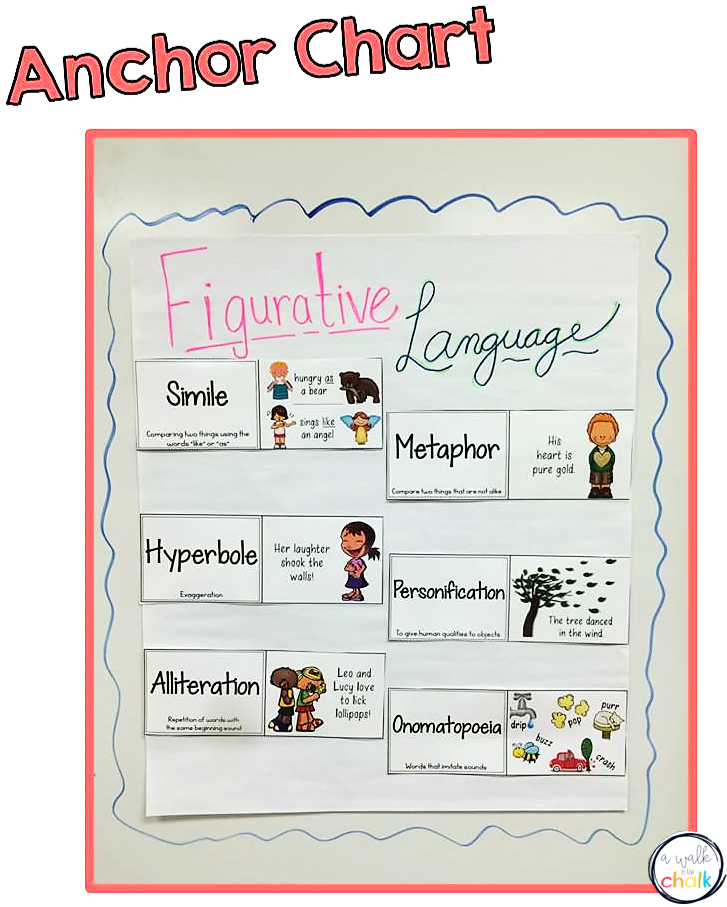
23. Support English-language learners
Students who are learning English benefit from examples that are clear and concise, with images to support language learning, like this anchor chart.
Learn more: ESL and figurative language anchor chart
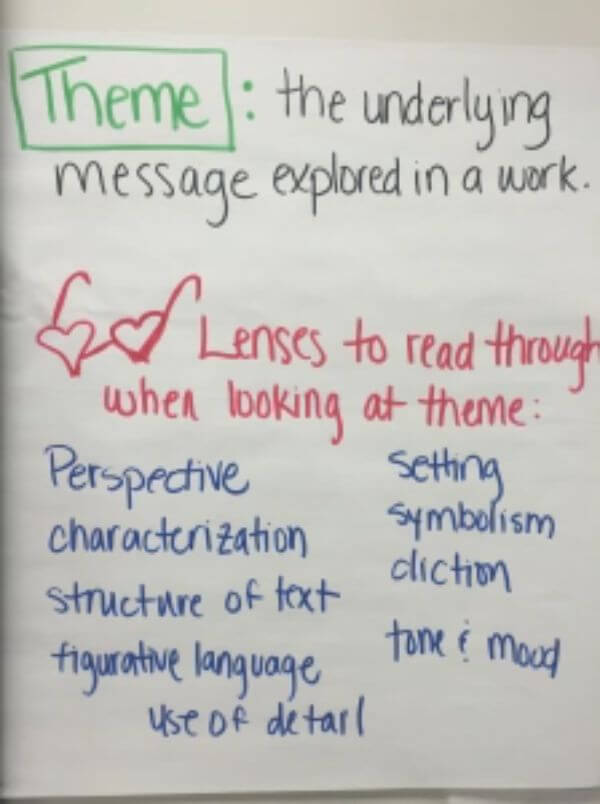
24. Connect with comprehension
Help students see when they should be thinking about figurative language, like when they are reading to understand theme.
Learn more: Theme anchor chart
Looking for more ideas like these figurative language anchor charts? Try these anchor charts that nail reading comprehension.
Plus, get all the latest teaching ideas and tips straight to your inbox when you sign up for our free newsletters!
